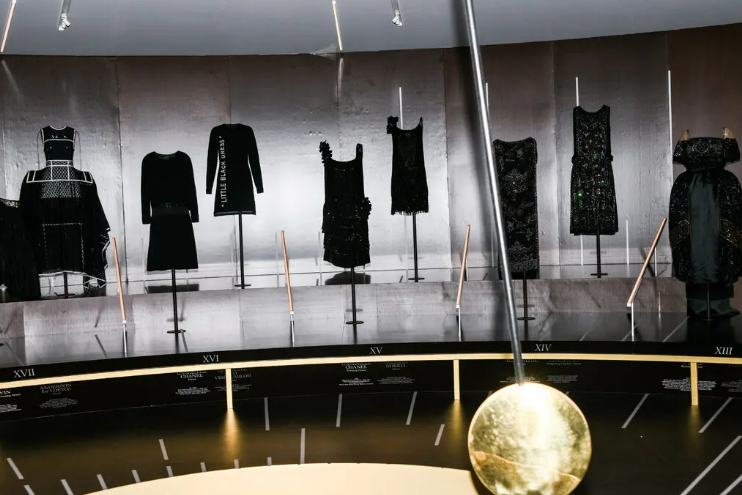
By Sophia Blythe, age 16, Wheeler School, Providence, R.I.
French philosopher Henri Bergson’s concept of la durée, that time is best understood through intuition and imagination, is the inspiration for the Costume Institute of the Metropolitan Museum of Art’s latest exhibition, “About Time: Fashion and Duration.”
In two adjacent galleries, a disruptive timeline is presented in the form of a giant clock face: 60 illuminated marks represent 60 minutes of fashion, each tick revealing paired ensembles, demonstrating how past and present coexist. One pairing that stood out was the iconic little black dress designed by Gabrielle Chanel in 1926, juxtaposed by Off-White’s 2018 riff on the original with the words “Little Black Dress” stamped on its front. Although these two dresses appear to be from different worlds — one belonging to the cobblestone streets of Paris, the other on today’s fashion week runway — they are forever united in time.
The longevity of the little black dress demonstrates how past and present seamlessly coexist, sewn together, in a timeless state of shape, motif, material and decoration, posing the questions: What is old? What is new? Organized to celebrate the 150th anniversary of the Met, the clothes in the show date from 1870, the year the museum was founded, to the present.
Virginia Woolf’s ghost narrates the exhibition, her written passages about clocks and time align with the pieces, generating additional meaning. The virtual experience of “About Time” during this topsy-turvy year of Covid, economic downturn, political turmoil and racial injustice makes the ideas of continuity and disjuncture contained in the show all the more relevant.
“About Time” concludes with Viktor & Rolf’s white dress from the 2020 spring/summer haute couture collection, made from upcycled swatches in a patchwork composition. This final piece serves as a symbol for the future of fashion with the significance of sustainability embedded in its design.
For far too long, fashion has censured discussions on the acceleration, consumption and production of clothing to meet the demands of the buyer. This constant demand for fast fashion has a negative impact on the environment. The fashion industry is responsible for 10 percent of annual global carbon emissions, more than international flights and maritime shipping combined. While a white dress made of upcycled materials might seem like a minor gesture, given the scope of this crisis, it made me reconsider how I consume fashion as well as its impact on the environment. Fashion, too, is a way of telling time; and without significant changes, what milestone will the Met be marking when it celebrates its 200th anniversary in 2070?